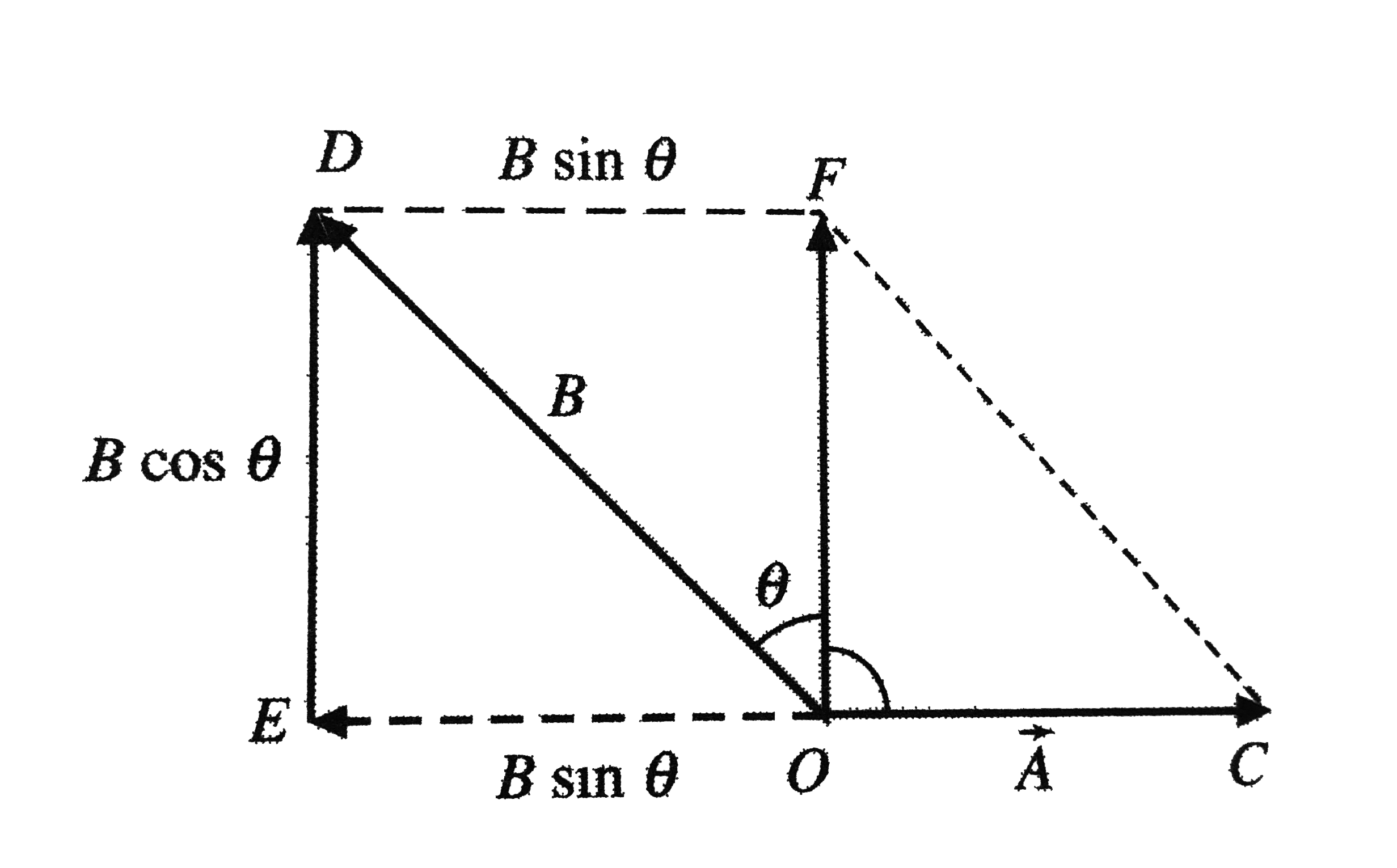The components of a vector →a along and perpendicular to a non-zero vector →b are ________ and ___________, respectively.
The correct Answer is:⎛⎜⎝→a.→b∣∣→b∣∣2⎞⎟⎠→band→a−⎛⎜⎝→a.→b∣∣→b∣∣2⎞⎟⎠
To find the components of a vector →A along and perpendicular to a non-zero vector →B, we can follow these steps:
Step 1: Find the component of →A along →B
The component of vector →A along vector →B is given by the formula:
Component of →A along →B=→A⋅→B|→B|2→B
Where:
- →A⋅→B is the dot product of vectors →A and →B.
- |→B| is the magnitude of vector →B.
Step 2: Find the component of →A perpendicular to →B
The component of vector →A perpendicular to vector →B is given by the formula:
Component of →A perpendicular to →B=→A−→A⋅→B|→B|2→B
Final Answer
Thus, the components of vector →A along and perpendicular to vector →B are:
- Along →B: →A⋅→B|→B|2→B
- Perpendicular to →B: →A−→A⋅→B|→B|2→B
- →A⋅→B is the dot product of vectors →A and →B.
- |→B| is the magnitude of vector →B.
- Perpendicular to →B: →A−→A⋅→B|→B|2→B
Topper's Solved these Questions
- BOOK - CENGAGE ENGLISHCHAPTER - DIFFERENT PRODUCTS OF VECTORS AND THEIR GEOMETRICAL APPLICATIONS EXERCISE - True and false3videos
DIFFERENT PRODUCTS OF VECTORS AND THEIR GEOMETRICAL APPLICATIONS
- BOOK - CENGAGE ENGLISHCHAPTER - DIFFERENT PRODUCTS OF VECTORS AND THEIR GEOMETRICAL APPLICATIONS EXERCISE - Exercise 2.118videos
DIFFERENT PRODUCTS OF VECTORS AND THEIR GEOMETRICAL APPLICATIONS
- BOOK - CENGAGE ENGLISHCHAPTER - DIFFERENT PRODUCTS OF VECTORS AND THEIR GEOMETRICAL APPLICATIONS EXERCISE - Subjective type19videos
DIFFERENT PRODUCTS OF VECTORS AND THEIR GEOMETRICAL APPLICATIONS
- BOOK - CENGAGE ENGLISHCHAPTER - CONIC SECTIONSEXERCISE - All Questions1344videos
CONIC SECTIONS
- BOOK - CENGAGE ENGLISHCHAPTER - LIMITS AND DERIVATIVESEXERCISE - All Questions691videos
LIMITS AND DERIVATIVES
Similar Questions
Show that the components of →b parallel to →a and perpendicular to it are (→a.→b)→a→a2and((→a×→b)→a))a2 respectively.
View SolutionIf a vector →a is expressed as the sum of two vectors →α and →β along and perpendicular to a given vector →b then →β is equal to
View Solutionif →a and →b non-zero ad non-collinear vectors, then
View SolutionThe vector (→a.→b)→c−(→a.→c)→b is perpendicular to
View SolutionThe vector component of vector
→A=3ˆi+4ˆj+5ˆk along vector →B=ˆi+ˆj+ˆk is :View SolutionIf non-zero vectors →aand→b are equally inclined to coplanar vector →c, then →c can be
View SolutionThe resultant of two vectors →A and →B is perpendicular to the vector →A and its magnitude is equal to half of the magnitude of the vector →B. Find out the angles between →A and →B.
 .View Solution
.View SolutionIf the vectors →a and →b are perpendicular to each other then a vector →v in terms of →a and →b satisfying the equations →v.→a=0,→v.→b=1 and [→v→a→b]=1 is
View SolutionIf →a,→band→c are three vectors of which every pair is non colinear. If the vector →a+→band→b+→c are collinear with the vector →c and →a respectively then which one of the following is correct? (A) →a+→b+→c is a nul vector (B) →a+→b+→c is a unit vector (C) →a+→b+→c is a vector of magnitude 2 units (D) →a+→b+→c is a vector of magnitude 3 units
View SolutionShow that |→a|→b+∣∣→b∣∣→a is perpendicular to |→a|→b−∣∣→b∣∣→a for any two non zero vectors veca and vecb.
View Solution

